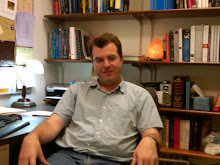So what's left? Mostly just the principle that x'=x-vt. Which seems...trivial.
Of course, when you start reading his work you find out that making and properly using a good telescope was no easier then than it is now, and that interpreting the images required very subtle reasoning. You learn that elucidating principles of relativity that we brush past in a page or two took a great deal of careful thought to cut through the conceptual fog of his time. You learn that besides the handful of things for which he was most famous he also worked on many other questions, and had to do careful work and cut through a great deal of conceptual fog and rule out a great many competing theories, not living in an era where the right answers are known and taken for granted.
In other words, you learn that he was pretty smart.
All too often we take a principle or discovery that required years of careful work by some of the greatest thinkers in human history, and we reduce them to a few pages. In more traditional lecture classes, you might spend half a class session on somebody's most important discovery before moving to the next topic. In the more reformed, interactive classes, you might spend A WHOLE CLASS!!! on somebody's most famous discovery. This means that you spend an entire 50 minutes on something that took a genius and his/her collaborators several years to work out. 50 minutes! (Even worse, in the reformed, interactive classes you spend 30 of those minutes discussing a hero's life's work with a semi-literate 18 year-old who graduated from the same lousy education system that miseducated you. That seems like an underwhelming way to encounter the fruit of years of intellectual effort.
I have no easy answer for what to do about this, but it just feels wrong to reduce this work to "Here's two pages and an apocryphal tale about some eccentricity of this scientist." I know that if we spent weeks reading Galileo and then several more weeks reading Newton and so forth we would never get anywhere in freshman physics. Still, I wish we could do our heroes more justice than quick treatment and urban legends.


